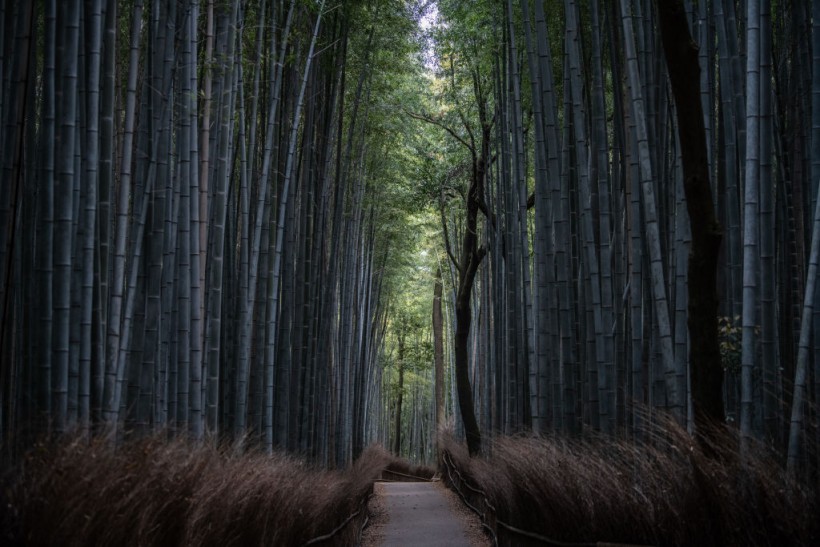Bamboo is a versatile and valuable plant that has many uses and benefits for humans and nature.
However, it also has a peculiar and mysterious life cycle that involves a rare and synchronized flowering event that occurs only once every several decades or even centuries.
This flowering event can have significant ecological and economic impacts, as it leads to the death of the bamboo plants and the emergence of new generations.
The phenomenon and causes of the rare bamboo flowering event
 (Photo : Carl Court/Getty Images)
(Photo : Carl Court/Getty Images)

Bamboo is a type of grass that belongs to the Poaceae family. There are more than 1,400 species of bamboo, which vary in size, shape, color, and habitat.
It can grow in tropical, subtropical, and temperate regions, and can adapt to different environmental conditions, and is also one of the fastest-growing plants in the world, as some species can grow up to one meter per day.
However, bamboo also has a unique and intriguing feature: it flowers only once in its lifetime, and then dies.
This phenomenon is called monocarpic flowering or gregarious flowering, as it involves the simultaneous flowering of all the individuals of a bamboo species or population within a specific geographic area.
The flowering interval can range from 10 to 120 years, depending on the species and environmental factors.
The exact causes and mechanisms of the rare bamboo flowering event are still unknown and debated by scientists. Some possible explanations include:
Genetic factors:
Bamboo may have a genetic clock that determines when it will flower, regardless of external conditions. This clock may be triggered by mutations or epigenetic changes that accumulate over time.
Environmental factors:
Bamboo may respond to environmental cues or stresses that indicate when it is optimal or necessary to flower. These cues or stresses may include temperature, rainfall, drought, fire, or disease.
Hormonal factors:
Bamboo may produce or receive hormonal signals that regulate its growth and reproduction. These signals may be influenced by internal or external factors, such as age, nutrient availability, or plant density.
Also Read: Giant Pandas Meant to Eat Meat, Not Bamboo
The impacts and implications of the rare bamboo flowering event
The rare bamboo flowering event can have significant impacts and implications for both nature and humans. Some of these include:
Ecological impacts:
The rare bamboo flowering event can affect the biodiversity and dynamics of the ecosystem where it occurs. For example:
- The bamboo flowers can attract pollinators and seed dispersers, such as insects, birds, and rodents, which can increase their population and activity.
- The bamboo seeds can provide a rich food source for herbivores, such as rodents, deer, and elephants, which can also increase their population and activity.
- The increased population and activity of herbivores can attract predators, such as snakes, cats, and bears, which can also increase their population and activity.
- The increased population and activity of animals can have cascading effects on the food chain and the balance of the ecosystem.
- The death of the bamboo plants can create gaps in the vegetation cover, which can affect the microclimate, soil quality, water cycle, and erosion.
- The death of the bamboo plants can also create opportunities for other plants to colonize the area, which can change the composition and diversity of the plant community.
Economic impacts:
The rare bamboo flowering event can affect the livelihoods and well-being of people who depend on bamboo for various purposes. For example:
- The loss of bamboo plants can reduce the availability of bamboo products, such as food, fiber, fuel, furniture, paper, crafts, etc., which can affect the income and welfare of farmers, artisans, traders, consumers, etc.
- The loss of bamboo plants can also reduce the provision of ecosystem services, such as carbon sequestration, soil stabilization, water purification, etc., which can affect the sustainability and resilience of human activities.
- The increased population and activity of animals can cause crop damage and human-wildlife conflicts, which can affect the security and safety of people.
The rare bamboo flowering event is a fascinating and mysterious phenomenon that can have significant ecological and economic consequences.
It is important for scientists to understand the causes and mechanisms of this phenomenon better to predict when it will occur and how it will affect nature and humans.
Related article: YouTuber Discovers New Tarantula Species Living Inside Bamboo in Northern Thailand
© 2024 NatureWorldNews.com All rights reserved. Do not reproduce without permission.

![Tsunami Hazard Zones: New US Map Shows Places at Risk of Flooding and Tsunamis Amid Rising Sea Levels [NOAA]](https://1471793142.rsc.cdn77.org/data/thumbs/full/70325/280/157/50/40/tsunami-hazard-zones-new-us-map-shows-places-at-risk-of-flooding-and-tsunamis-amid-rising-sea-levels-noaa.jpg)



